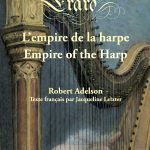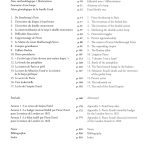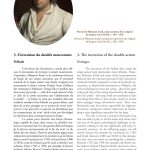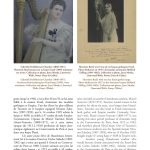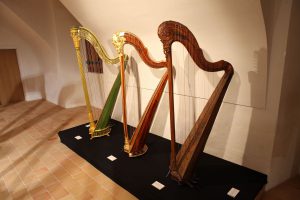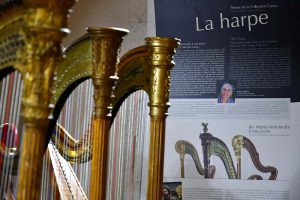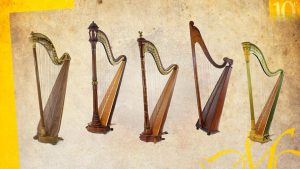Camac Blog
The Legacy of Erard
Latest
October 6, 2022
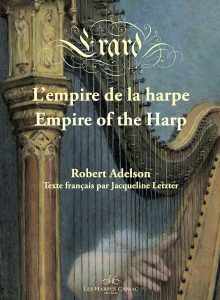 In his new book Erard: Empire of the Harp, Robert Adelson refers to members of the Erard family by their first names, reserving “Erard” for the house of Erard in general. Most pedal harpists easily recognise the name Sébastien Erard: more than two centuries on, we are all still using his double action mechanism and forked discs. The legacy of the Erard firm, however, is not one of solitary genius. In fact, it is a family tale of extraordinary innovation and passion for the harp.
In his new book Erard: Empire of the Harp, Robert Adelson refers to members of the Erard family by their first names, reserving “Erard” for the house of Erard in general. Most pedal harpists easily recognise the name Sébastien Erard: more than two centuries on, we are all still using his double action mechanism and forked discs. The legacy of the Erard firm, however, is not one of solitary genius. In fact, it is a family tale of extraordinary innovation and passion for the harp.
Sébastien Erard was as committed to the harp as to the piano. “This was completely unusual”, Robert Adelson remarks. “Other makers, like Pleyel, made pianos and harps, but Pleyel’s harp came much later. Their chromatic harp was highly influential at the time, but their legacy is as a piano maker. Sébastien made both instruments very early on, founding the London branch of Erard in 1792 solely to build harps. This was also a pragmatic decision, it being difficult to get a French patent for the double-action mechanism amid revolutionary upheaval. Nonetheless, it positioned the house of Erard at the centre of European musical life. Modern harpists sometimes have to defend their instrument, but that wasn’t at all the case in the 19th century. For a long time, the piano and the harp were as important as each other. Many people played both, and they could be found together in every salon.”
It also turned out to be harps – or, the London branch – that ensured the survival of the company. Jean-Baptiste Erard had invested heavily in Paris, recruiting many skilled workers, importing vast quantities of precious woods, and occupying enormous premises on the rue du Mail. The disruption of the French Revolution plunged him into financial crisis, including bankruptcy in February 1813.
Hoping that Sébastien Erard might return from making harps in Great Marlborough St to help him in Paris, Jean-Baptiste persuaded him to take on his son: Pierre Erard, just twenty at the time and hugely keen to become a harp maker. In time, indeed he did; the fuller sonority of his Gothic harp came to be definitive, although he did not release his new design until Sébastien’s death. Much earlier than this however, Pierre proved himself to be a “genius manager”, as Robert Adelson describes. “Pierre is not as well-known as his uncle, but he’s at least as important a character. His management of the London firm proved to be masterful, and he was also able to send money to Paris every month, saving that business.”
Anecdotes about Pierre Erard sleeping under a harp cover on the road, and dreaming he had turned into a harp, may resonate with some readers of this blog post. He was a decent harpist himself, regretting that the business left him little time to practise; equally, he adored his work. His rivalry with Dizi ranged from challenging him to a pistol duel to composing works to show off the instruments: “Dizi must curse me”, he wrote to Sébastien in 1815, “because he frequently finds me in his way”. As such, he was instrumental in diffusing his uncle’s innovations. “In terms of their instruments, musicians are inherently quite conservative”, explains Robert Adelson. “That might sound surprising, but the reason is simple. Learning to play an instrument involves the mastery of thousands of micromovements, so you’ll not want to relearn them unless you have to. In addition, the harp is a large and expensive instrument, so you can imagine that if you had just bought a single-action harp in the nineteenth century, you’d have needed convincing to change it. Pierre was tireless in gaining acceptance for Erard harps among musicians. It was a very important partnership. Pierre was also marketing truly exceptional harp making. It’s astonishing how quickly and early Sébastien tended to analyse and resolve problems in the harp build. He put forked discs onto his very first harp. You’d expect a harp maker to build like his masters for a while, then innovate later. Now, 230 years on, we’re still using those discs.”
In 1851, an Erard harp received the sole award for musical instruments at the Great Exhibition in Crystal Palace, and Pierre Erard opened a splendid new factory in South Kensington. On Pierre’s death in 1855, his funeral procession contained musicians such as Hector Berlioz, Félix Godefroid, Théodore Labarre, Jean-Baptiste Vuillaume. “For the first time in over eighty years”, Robert Adelson writes (p. 146), “there was no longer an inventive genius running the family firm”. Neither Sébastien, nor Pierre and his wife Camille had children, and the company merged with Pleyel and Gaveau in 1961, before a quiet decade for French harp making in the 1970s.
Yet as Adelson concludes, Erard harps have never fallen silent. Instruments live in the hands of the artists who play them, and Erards were the choice of Alphonse Hasselmans, then his successor at the Paris Conservatoire, Marcel Tournier. The legacy continues with their students: Henriette Renié, Carlos Salzedo, Lily Laskine, Nicanor Zabeleta, Micheline Kahn, Marcel Grandjany, Pierre Jamet, Jacqueline Borot, Mireille Flour, Sidonie Goosens, Denise Mégevand…in this sense, so many of the harpists in the world today, somewhere in their DNA, have and continue the genius of Erard.
Want to read more? Erard: Empire of the Harp is available here from the Camac webshop. Robert Adelson will also give a lecture about his research at the Camac Festival on Saturday, October 22 at 10AM in our Paris showroom. Bookings can be made online here (but be quick, because at time of writing we are almost fully booked).

